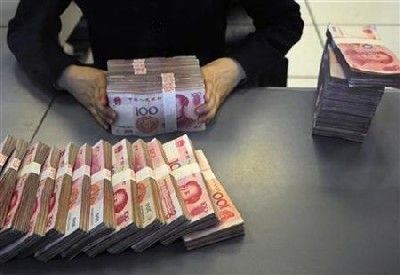A weaker rupee might stimulate Indian exports and nullify some of the effects of Chinese devaluation, notes Devangshu Datta.
 China's yuan devaluation last week might spark off competitive devaluations in other currencies.
China's yuan devaluation last week might spark off competitive devaluations in other currencies.
There will be an impact on the rupee and on India's trade profile as well. China's imports and exports account for 13 per cent of global merchandise but its exports slowed 8.3 per cent in July compared to July 2014.
In isolation, the devaluation would make Chinese exports cheaper and imports more expensive in yuan-terms. The Chinese expect the devaluation to stimulate export volumes.
However, every central bank will respond in some way or the other. Export-oriented economies such as Taiwan, South Korea and Thailand will probably devalue their respective currencies to retain competitiveness.
Europe and Japan are into quantitative expansion, which could lead to further devaluations of the euro and the yen.
If many central banks attempt to push respective currencies lower, the Chinese purpose might not be served. This is also where the dollar's role as the world's reserve currency comes into prominence.
The dollar will rise because most other currencies will target the greenback as central banks try to devalue. Also, money flees to the safety of dollar-treasury bills in times of turmoil.
The US Federal Reserve appeared committed to raising dollar policy rates prior to the Chinese action. The Fed might now review that decision, but we don't know what it will do.
What happens to the rupee or rather, what action is the Reserve Bank of India (RBI) likely to take with respect to the rupee?
Indian merchandise exports have shrunk in every month in the past seven months in a row. One reason is the falling value of crude and gold. India's refined petro-product exports and jewellery exports have fallen in absolute value.
But textiles, leather, and other items have lost ground in terms of volumes and value. India's exports to China include cotton, copper, chemicals., and those could also be hit by an adverse move in terms of yuan-rupee exchange rates.
Machinery, auto-ancillary parts, and steel sectors will struggle to maintain momentum since Chinese goods are direct competitors. In addition to exports being knocked out by Chinese competition, imports might flood into India from China.
The rupee lost ground against the euro, yen and the dollar last week. RBI might let it settle into a lower orbit.
Real effective exchange rate calculations imply the rupee was overvalued even before the Chinese devaluation and that impression is reinforced by trade data.
A weaker rupee might stimulate Indian exports and nullify some of the effects of Chinese devaluation. A devaluation comparable to that of the yuan could take the rupee down to 66.5 or lower against the dollar.
A further possibility is that of more rate cuts in China. The country has already cut rates several times in the recent past to stimulate growth.
The currency devaluation could be followed by more rate cuts in China, or more devaluation. In such a case, RBI might have to consider out-of-turn policy rate cuts to prevent unwanted rupee appreciation.
A weaker rupee has multiple implications. It might help reverse the slide in exports. So multiple industries with export-orientation would benefit (and of course net importers would lose ground).
On the negative side, a weaker rupee would also leave India vulnerable to any rise in global crude and gas prices.
It could also spark some domestic inflation since fuel imports would get more expensive in rupee terms. However, global energy prices are liable to remain muted due to a combination of weak demand and new supply from Iran. So the risks in terms of energy inflation don't seem high.
There is another risk. companies, which borrowed abroad when the rupee was strong, might struggle to service such loans after a devaluation.
This is especially true for companies that don't have forex income to service commitments, and which have un-hedged exposures as well. Investors will have to look at this possibility, case-by-case.
There has already been a pick-up in the export-oriented information technology (IT) and pharma sectors. IT in particular is likely to beat the earlier forecast.
There could be a reversal in the fortunes of exporters in other sectors, if the rupee is pushed down further and allowed to stay down. This trend is likely to play out over the next couple of quarters.











